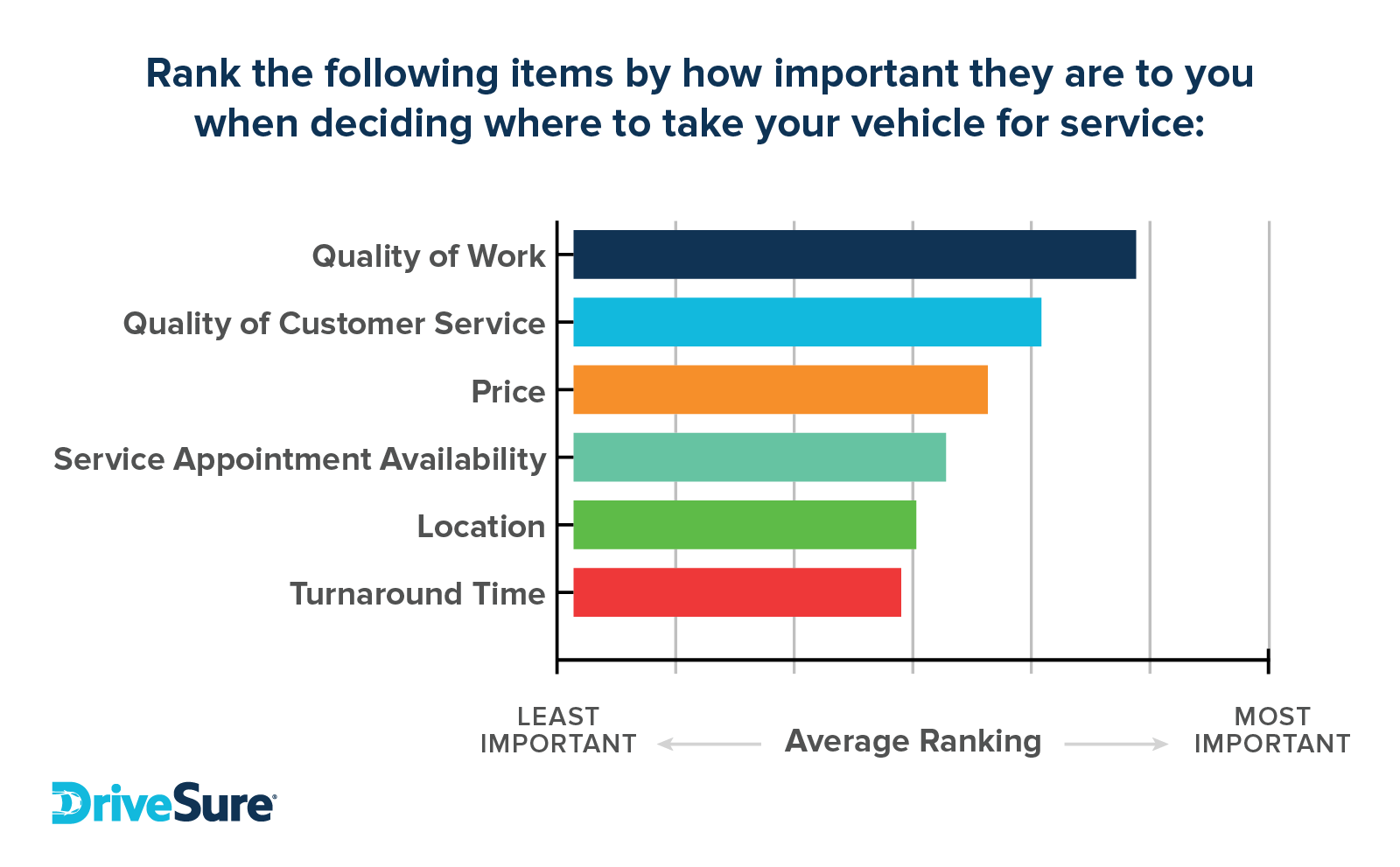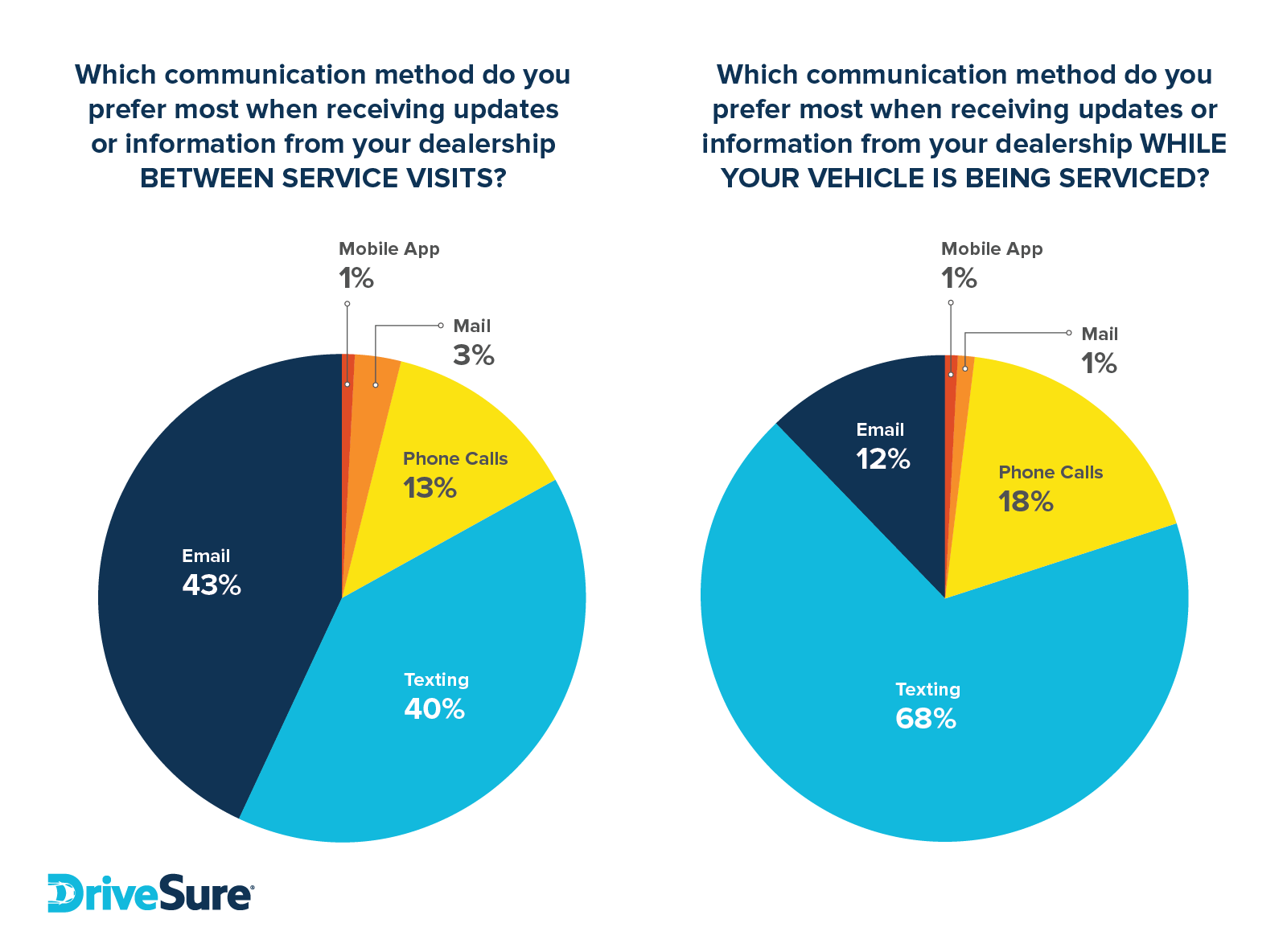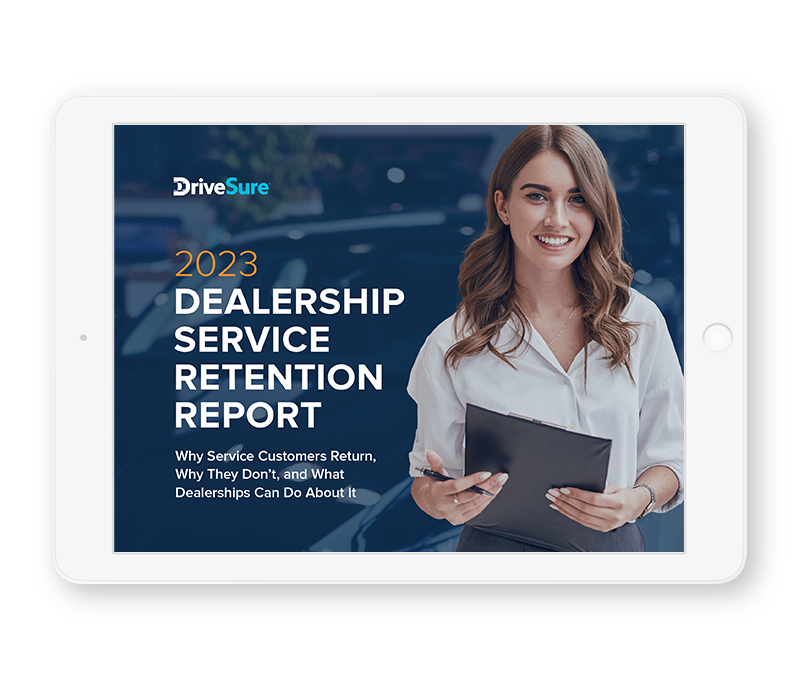In the wake of the pandemic, dealership consumers made significant changes to their behavior and expectations. Yet how can we be sure which changes have stuck, and which have reverted back to how they were in 2019?
Understanding these changes is crucial for dealerships who want to adapt and thrive in the new normal, which is why DriveSure followed up our 2020 consumer research with the 2023 Dealership Service Retention Report.
Here are some of the most notable shifts we discovered:
Post-pandemic consumer behaviors: what’s changed?
Work quality, price, and customer service are head-to-head as top factors
Survey participants were asked to prioritize six criteria that influence where they take their vehicle for maintenance and repairs. Since 2020, the significance of ‘quality of customer service’ has risen, surpassing ‘price’ to become the second most crucial factor. However, ‘quality of work’ continues to hold its position as the primary concern.
This trend underscores the need for dealerships to maintain high standards in service delivery and price competitiveness. Even though it has moved down the priority list, the cost of services remains a significant factor for a large number of customers.

Service appointment availability has become a key differentiator
A new and significant change post-pandemic is the emphasis on service appointment availability. The inability to secure timely service appointments has emerged as a major factor influencing customer decisions to stay with or leave a dealership.
For a large portion of customers, including many of the most loyal ones, a lack of appointment availability significantly influences the decision to seek services elsewhere.
In other words, nearly a third (27%) of extremely loyal customers say they would go elsewhere for service due to appointment unavailability, and this tolerance drastically drops across other loyalty segments — escalating to 57% (of those with no loyalties) going elsewhere if they couldn’t easily get an appointment.
Dealerships now face the challenge of balancing high-quality service with efficient scheduling. Ensuring that customers can easily book and obtain service appointments is no longer a convenience, but a necessity to prevent defection.
A helpful way to avoid this? Ask to set the next service appointment before the customer leaves.
What keeps customers coming back to your dealership?
Insights from Nearly 1,500 Dealership Customers
There’s a much higher preference for text messaging
Text messaging has seen a notable increase in popularity as the preferred mode of communication, especially among vehicle owners under 55.
Customers don’t just prefer text messages DURING visits now (68% of consumers), but they’re starting to prefer it BETWEEN service visits too (up from 32% to 40% of consumers who say it’s their preferred method).
This shift necessitates dealerships to integrate SMS into their communication strategies to ensure effective and preferred customer interactions.

There’s substantially less interest in traditional communication channels
While text message preference is going up, the same can’t be said for other forms of communication. Consumer preference for emails between service visits, for instance, dropped from 50% to 43% from 2020 to 2023.
There has been a significant decline in the interest in phone calls and emails as primary communication channels. Dealerships should take note of this change and adjust their communication strategies accordingly to cater to the new consumer preferences.
This doesn’t mean you should skip phone calls and emails entirely, of course: both still have their place in your broader messaging strategy!
For instance, post-service follow-up calls can provide a personal touch, allowing for direct feedback and fostering a sense of customer care. Similarly, emails remain an integral part of a multi-channel communication approach, essential for conveying detailed information, updates, and promotions.
Perhaps surprisingly, many consumer preferences remain the same
Despite the significant changes brought about by the pandemic, certain aspects of consumer behavior have remained remarkably consistent. Understanding these enduring trends is just as crucial for dealerships aiming to maintain and grow their customer base.
Customers still look for high quality work and great customer service first
While the actual “top factor” might be in flux when it comes to where customers go for service, certain things will always be true: customers want to be treated well and pay a fair price for a job well done.
Quality of work, followed closely by quality of customer service and price, continue to be the critical factors. The dealership’s ability to provide a positive, responsive, and personalized service experience plays a significant role in retaining customers. These relatively steady preferences underscore the importance of maintaining high standards in both technical service and customer interactions.
Dealerships still preferred for manufacturer-recommended maintenance and specialized services
A significant portion of consumers continue to rely on dealerships for manufacturer-recommended maintenance. This is likely due to the perception that dealerships have the specific expertise and equipment required for these services.
Dealerships should capitalize on this trust by ensuring that they provide expert, efficient service for these maintenance tasks, reinforcing the consumer’s choice to rely on them.
Similarly, certain specialized services, like dealing with unknown issues or addressing complex electrical problems, remain more trusted with dealership service departments. Consumers often perceive dealerships as having more qualified technicians and better diagnostic tools for these types of services.
This trust provides an excellent opportunity for dealerships to showcase their expertise and technological edge in handling complex vehicle issues.
Dealerships can still find an advantage by having the latest data
Understanding of the post-pandemic dealership consumer is crucial for dealerships aiming to navigate and succeed in the new normal. To learn more, download the 2023 Dealership Service Retention Report, which highlights critical shifts in consumer behaviors and preferences in the post-pandemic era.
What keeps customers coming back to your dealership?
Download the 2023 Dealership Service Retention Report to see what dealership service customers have to say.


